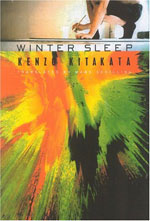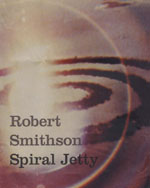
This ‘process vs. the muse’ dialogue underpins Robert Sheppard’s The Poetry of Saying, which discusses British Poetry in the second half of the 20th Century. It’s also a dialogue with the past, and it’s this past, particularly the rather well-rehearsed and well-known debate about arguments at The Poetry Society, which informs the book. I’d contest that Sheppard has rather taken the party line about ‘us vs. them’ [ie experimental poets vs the mainstream] to heart; personally I think this version ignores a lot of the excitement in the air in London at the time - for instance my own magazine, Stride, was started then, as were other journals such as Slow Dancer. There were plenty of live readings and events happening, too. And like many younger writers, I simply don’t want a 30 year old argument continued; schools and movements must be discouraged, destroyed or dismantled, and we must read and talk as individuals engaged in networks, not schoolboy clubs. [End of lecture.]
But away from this history of petty argument, which should have long since been forgotten rather than sulked about and pondered on, Sheppard is on tiptop form as he explores and comments on the work of several individual authors. He is particularly good when writing about Roy Fisher, Lee Harwood and Allen Fisher; less convincing on Maggie O’Sullivan and Bob Cobbing - whose work is perhaps too difficult and strange to actually expound upon well in the context of writing (it’s far more rooted in the visual and aural than anything else discussed in the book). Sheppard is also good in his chapter which proffers an overview of ‘Linguistically Innovative Poetry 1978-2000’, although again it adopts a rather orthodox approach to the subject by discussing ‘schools’.
I hope Sheppard, and others, can move on from the petty politics of the past and concentrate on the important things: writing itself and what can be done with language. [I note with despair there is a whole book forthcoming from Salt on the ‘1970 poetry wars’. How sad.]

And finally Anne Baldassari’s Bacon and Picasso, which does exactly what it says on the cover, that is explores the influence of Picasso on Francis Bacon. There’s no denying the well-documented influence [a one-sided dialogue?] between the two, but I have to say that at times this book is simplistic and naïve: there are too many pairs of paintings reproduced opposite one another here, as through to prove the argument. But two amorphous body shapes, or two stretched figures do not a thesis prove. Particularly laughable is the pairing of Picasso’s bull sculpture made from a bicycle saddle and handlebars with Bacon’s bullfight painting… At this kind of simplistic level one could match up many pairs of artists who had no real connection at all.
However, Baldarassi’s text is much more thorough and articulate than this kind of illustration might suggest. She thoroughly documents Bacon’s critical and aesthetic response to Picasso early on in his career and its continuing presence throughout his long and successful career. She persuasively maps out influences rather than similarities, contextualising both artists’ lives and work, as Bacon reassesses and reconsiders Picasso’s presence in and effect on his work. Handsomely illustrated and designed, this like the Spiral Jetty volume is a welcome addition to the art shelves.
© 2005 Rupert Loydell